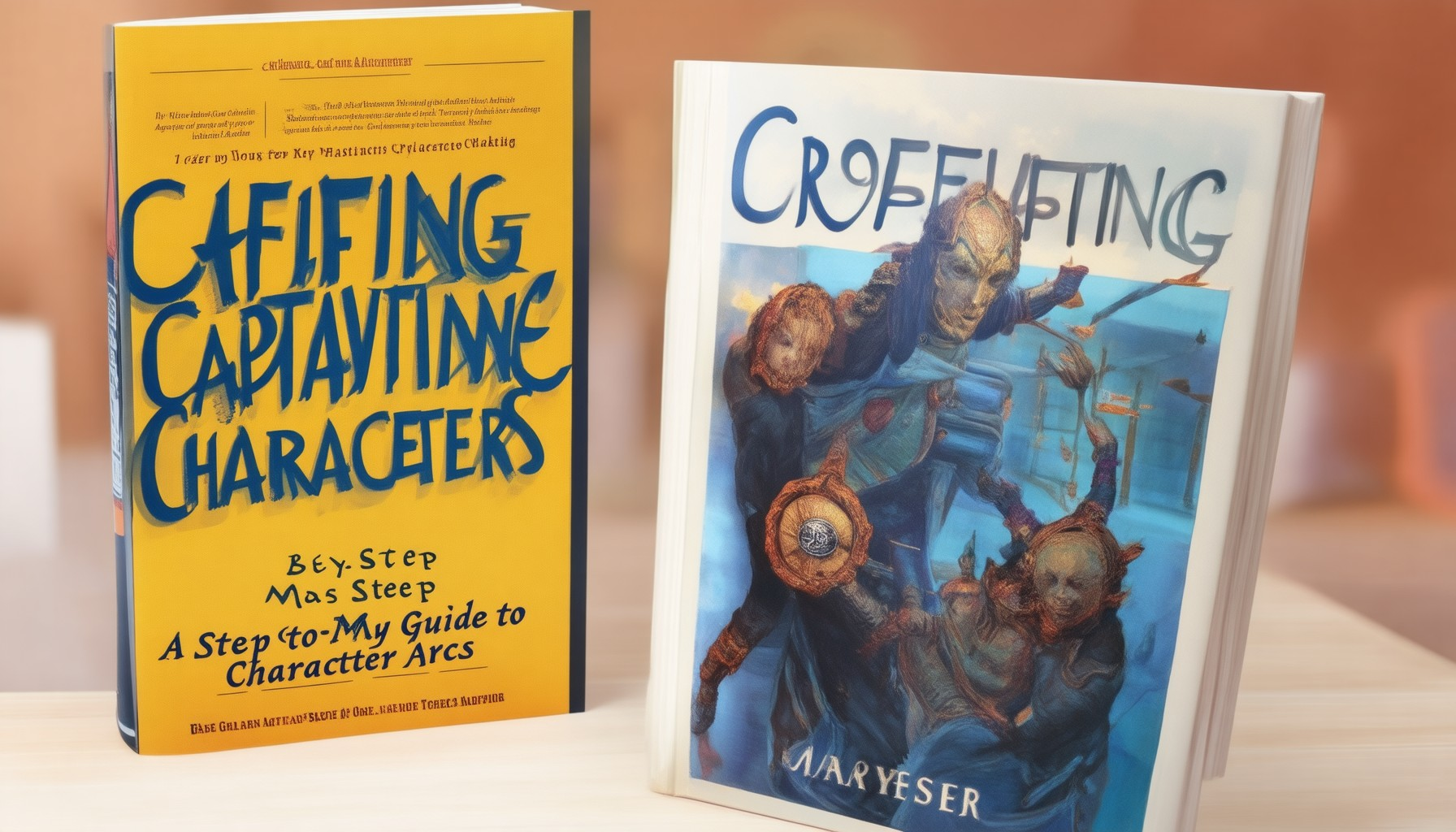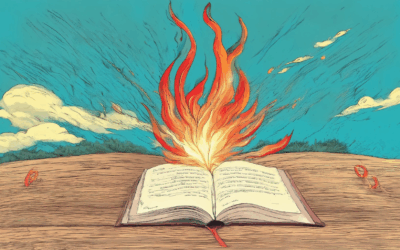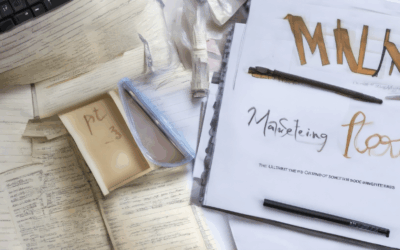Character arcs are the backbone of compelling storytelling, offering a transformative journey that captivates audiences and leaves a lasting impression. Whether you’re crafting a beloved protagonist or a complex antagonist, mastering the art of creating character arcs is essential for engaging narratives that resonate deeply with readers. In this comprehensive guide, we’ll delve into the intricacies of character development, exploring everything from the fundamental principles to real-world applications, ensuring you emerge with a newfound mastery of shaping unforgettable characters. From understanding the essence of character arcs to navigating the pitfalls, this article serves as your ultimate resource for crafting captivating characters that steal the spotlight and leave your audience spellbound.
Key Takeaways
– Craft a compelling character arc by identifying a clear endpoint and catalyst to drive growth and transformation.
– Foster meaningful growth through a structured journey that includes challenges, rising tension, and a climax.
– Ensure lasting change by integrating new skills and reflecting on growth post-climax.
– Avoid flat characters by providing consistent, motivated behavior rooted in their backstory.
– Build depth by showing internal growth and alignment with the story’s setting.
– Structure your arc with exposition, rising action, climax, and resolution to create a cohesive narrative.
– Capture themes by embedding a central message or moral throughout the story.

How to Create a Character Arc
Creating a compelling character arc is essential for developing a well-rounded and relatable protagonist. Below is a structured guide to crafting an effective character arc:
- Character Development :
- Begin by deeply analyzing your protagonist. Explore their traits, strengths, weaknesses, motivations, and fears. Understanding their psychology and emotional state will provide insight into their potential growth.
- Catalyst Event :
- Identify the inciting incident or catalyst that sparks change. This could be a discovery, a challenge, or a life-altering experience. For example, Harry Potter’s discovery of his magical heritage serves as his catalyst, propelling him toward self-discovery and heroism.
- Journey Through Challenges :
- Construct a sequence of obstacles that force the character to evolve. Each challenge should present unique opportunities for growth, pushing the character beyond their comfort zone. Consider moments where the character regresses or faces setbacks, adding depth and realism to their journey.
- Climax :
- Design a pivotal moment where the character confronts their greatest fear or challenge. This could be a physical battle, an internal struggle, or a moral dilemma. The climax should showcase the character’s resolve and highlight their transformation.
- Resolution :
- Depict the resolution phase where the character reflects on their journey. This could involve accepting their new reality, incorporating lessons learned, or seeking peace. The resolution should demonstrate how the character has been fundamentally changed.
- Theme Alignment :
- Ensure the character arc aligns with the story’s central theme. Whether it’s about redemption, self-discovery, or personal growth, the arc should resonate with the overarching message of the narrative.
By following these steps, you can create a dynamic and believable character arc that enhances your story’s emotional depth and engages readers effectively.
What Are Good Character Arcs?
A well-crafted character arc is essential for creating relatable and memorable characters in stories. A good character arc typically follows a journey of growth, transformation, or self-discovery. Here are some key elements of a successful character arc:
1. Setup
- Introduce the character with distinct traits, motivations, and flaws.
- Establish their background, personality, and relationships with others.
- Provide a clear driving force for their actions and decisions.
2. Confrontation
- Present challenges, conflicts, or obstacles that push the character to evolve.
- Create internal and external conflicts that test their resolve and strengths.
- Allow the character to face their fears, insecurities, or past traumas.
3. Climax
- Introduce a major turning point or crisis that forces significant change.
- Create a moment of vulnerability or epiphany where the character reflects on their life.
- Build suspense and tension leading to a pivotal decision or realization.
4. Resolution
- Show the character’s growth or transformation resulting from the experiences.
- Demonstrate how they’ve changed, developed new skills, or gained wisdom.
- Provide closure to their personal journey while leaving room for future growth.
Examples of Great Character Arcs:
- A protagonist who starts as timid and becomes confident through overcoming public speaking fears.
- A character who evolves from a naive youth to a seasoned leader after facing adversity.
- An antihero who rediscovers their morality and chooses to act selflessly.
By carefully crafting these elements, authors can create characters that resonate with readers and leave a lasting impression.

What Are the 4 Types of Character Development?
In literature, character development is a crucial aspect that helps authors create relatable and multi-dimensional figures. Below are the four primary types of character development:
- Dynamic Characters : These are characters who undergo significant transformation throughout the story. They evolve emotionally, mentally, or physically, often in response to external events or internal struggles. An example is Scout Finch from “To Kill a Mockingbird,” who learns about injustice and moral complexity during his journey.
- Static Characters : In contrast, static characters remain unchanged. Their personality, beliefs, and behaviors don’t evolve significantly. While they may play important roles, they don’t grow or develop over time. A classic example is Atticus Finch, who embodies justice and integrity but doesn’t change his core values.
- Round Characters : Round characters are complex and multifaceted. They possess depth, with intricate motivations and backgrounds. They are often portrayed with rich interior lives and nuanced emotions. Elizabeth Bennet from Pride and Prejudice is a well-known example of a round character, showcasing her intelligence and capacity for love and growth.
- Flat Characters : Flat characters lack depth and are often used for comedic, symbolic, or situational purposes. They typically serve specific functions within the plot without developing into three-dimensional individuals. A famous example is Mr. Darcy’s friend Lord Melbourne, who is memorable but not deeply developed.
Understanding these types of character development allows writers to craft stories that resonate with readers, offering a spectrum of human experiences and complexities. By balancing dynamic and static characters, authors can create narratives that feel authentic and thought-provoking.

How to Write a Positive Character Arc
A positive character arc is a narrative journey where your protagonist grows or transforms in a meaningful way, often ending with personal growth or a significant life lesson. To craft an effective positive character arc, follow these steps:
- Identify the Endpoint Determine the final state of your character’s growth. This should be clear and fulfilling, such as overcoming fear, learning empathy, or gaining self-confidence.
- Establish the Catalyst Identify the event or challenge that forces your character out of their comfort zone and initiates their growth. This could be a problem they can’t solve conventionally.
- Develop the Journey Create a series of obstacles and challenges that push your character closer to their endpoint. Each challenge should align with their growth and be meaningful.
- Built Rising Action Show your character applying their newfound skills or knowledge in increasingly complex situations, building tension and showcasing their progress.
- Reach the Climax Have your character face their biggest challenge yet. Their actions and decisions here should reflect their growth and lead to a breakthrough moment.
- Integrate the Growth Allow your character time to reflect on their journey and incorporate their growth into their daily life. This could involve seeking feedback or noticing others’ reactions.
- Maintain the Change Ensure your character continues to grow beyond the story’s end. They may apply their lessons to future challenges or inspire others.
For example, consider a shy teacher who fears public speaking. The catalyst is being asked to present at a school assembly. Through preparation and facing discomfort, they overcome their fear, reaching the endpoint of increased confidence. The rising action includes them volunteering for more speaking engagements, the climax is their successful presentation, and the integration involves them mentoring a nervous colleague. Finally, they maintain their growth by continuing to help others and embracing opportunities to speak publicly.
Avoid common mistakes like abrupt changes or focusing solely on external events. Instead, showcase internal growth through actions, dialogue, and reflection to create a believable and inspiring arc.
What Makes a Bad Character Arc?
A poorly developed character arc can leave readers feeling disconnected and unsatisfied. Here are some key factors that contribute to a bad character arc:
- Poor Development : Characters who lack clear motivations or purposes for their growth often end up with abrupt or unmotivated changes. Their development feels forced rather than organic.
- Inconsistent Behavior : If a character’s actions don’t align with their established traits or backstory, it can confuse readers. Inconsistent behavior makes the character less relatable.
- Flat Characters : Characters who remain unchanged throughout the story are often described as “flat.” Without meaningful growth or development, they fail to engage readers.
- Unmotivated Decisions : Decisions driven by unclear or arbitrary reasons can make a character’s choices feel unrealistic. Motivation is crucial for believable character arcs.
- Overdevelopment : Overly aggressive character development can lead to extreme changes that feel unnatural. Characters may end up making decisions that contradict their previous behavior.
- Ignoring the Setting : A character’s arc should reflect the world they inhabit. Ignoring the setting can result in changes that feel disconnected from the story’s context.
- Focus on External Events : Without internal growth, external events alone cannot create a compelling arc. Character development requires personal growth, not just a series of exciting happenings.
- Lack of Conflict Resolution Skills : If a character fails to learn from their mistakes or challenges, their growth stalls. Effective conflict resolution is essential for meaningful development.
- Ignoring Audience Expectations : Characters whose arcs defy reader expectations can alienate the audience. Readers often have implicit expectations about character growth, which a poor arc may violate.
By avoiding these pitfalls, authors can create character arcs that are engaging, believable, and satisfying to readers.

How to Structure an Arc
An arc is a sequence of events in a story that culminates in a climax and leads to a resolution. Structuring an effective arc requires careful planning and attention to detail. Below is a guide to help you create a well-defined arc:
1. Exposition
- Purpose: Introduce the characters, setting, and central conflict.
- Example: In Romeo and Juliet , the exposition establishes the feuding families and the main characters’ backgrounds.
2. Rising Action
- Purpose: Build tension and develop the story’s main conflict.
- Example: In Harry Potter , the rising action includes discovering the magical world and facing challenges.
3. Climax
- Purpose: Resolve the main conflict and reach the turning point.
- Example: In Star Wars: A New Hope , Luke uses the Force to defeat the Empire.
4. Falling Action
- Purpose: Wrap up the story and show the consequences of events.
- Example: In The Lion King , Mufasa’s spirit guides Simba to victory.
5. Resolution
- Purpose: Conclude the story, leaving the reader satisfied.
- Example: In The Little Mermaid , Ariel chooses her own happy ending.
Additional Considerations:
- Inciting Incident: An event that disrupts normal life and starts the protagonist’s journey.
- Moral or Theme: A central message or lesson that runs throughout the story.
- Medium Differences: Structures may vary in TV series, video games, or real-life scenarios.
By following these steps, you can create a cohesive and engaging narrative that guides readers through the story’s journey.





0 Comments